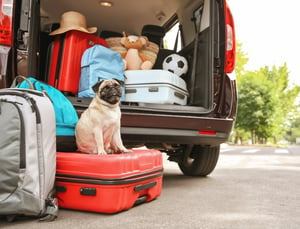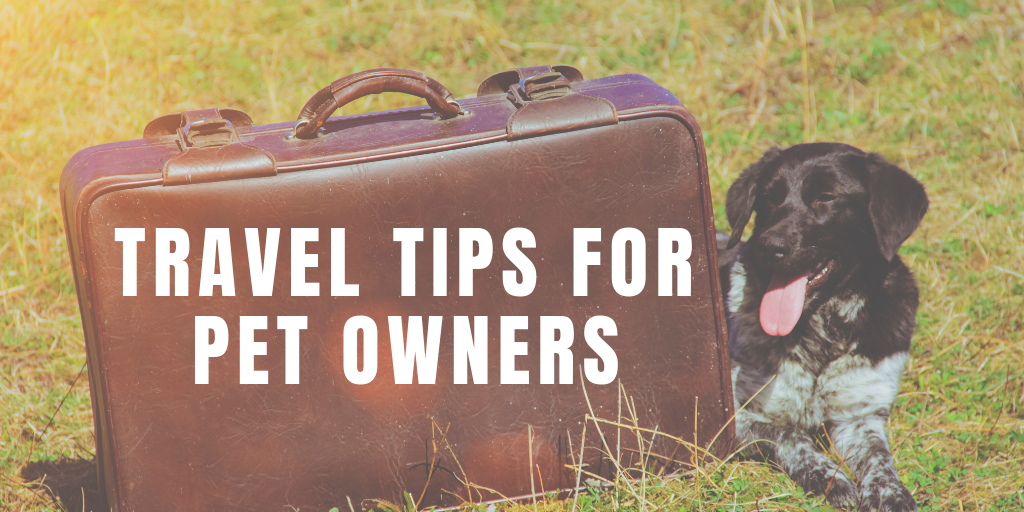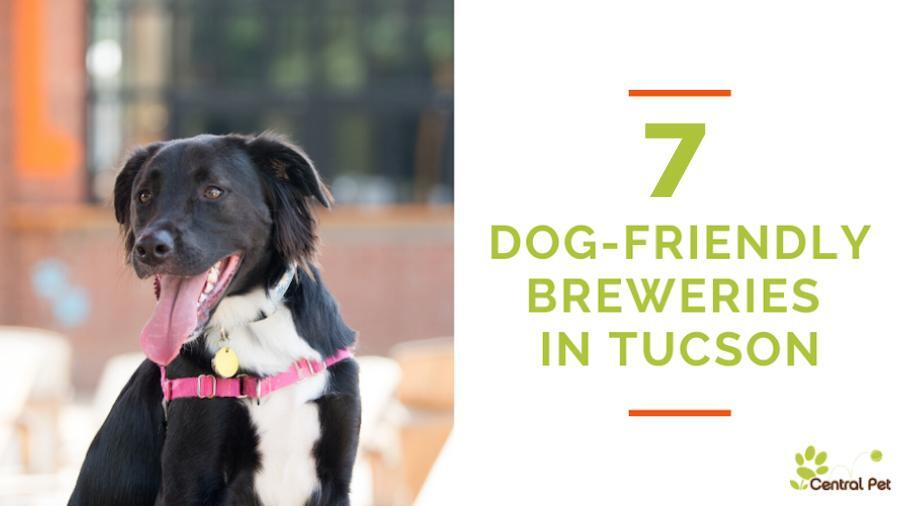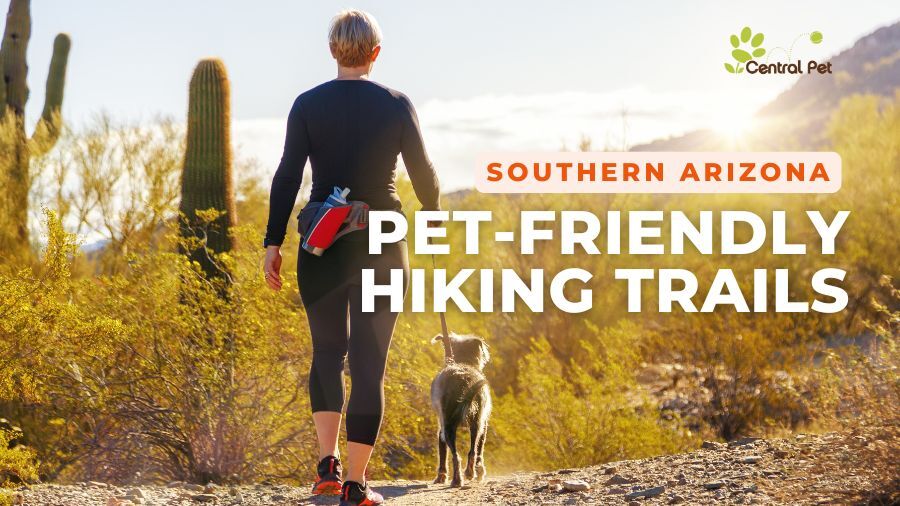Traveling with a pet may sound really challenging, but with a little planning and preparation, you and your furry friend can actually have a lot of fun together! But before you head out, it’s important to make sure you’re both up to the adventure.
This is where a travel checklist comes in handy. Traveling with your pet should be memorable, not miserable, and a checklist is a good way to make sure that’s the case. Forgetting important items can cause your vacation to go downhill in a hurry (like a dog chasing a ball)--but having everything your pup needs to be safe and comfortable will make the travel experience one that you’ll both enjoy.
Here’s our essential checklist that can make traveling with your dog a success.
1. Travel and Lodging Reservations
Because pet travel has become increasingly popular, more and more airlines and lodging facilities are accommodating dogs. And, thanks to a variety of sources for travel information, narrowing a location to visit with your pup is easier than ever. Looking for a pet-friendly destination? Check out the sources below to find a location you and your pet will enjoy:
Keep in mind that pet-friendly can mean different things. If you’re flying, it’s important to remember that each airline and airport will have different rules and regulations. The same could be said for train stations if you’re traveling by rail. When it comes to lodging, your pooch may be allowed, but some facilities may have certain restrictions that could put a damper on your vacation.
Also, it doesn’t hurt to follow up on your travel and lodging arrangements before you leave. Calling the hotel, campground, etc., in advance is a good way to ensure you won’t run into any last-minute problems when checking in with your pup.
2. Vaccination Records
A good rule of thumb is to have your beloved pet up-to-date on all vaccinations a few weeks before departing for your trip. Talk to your veterinarian about what additional vaccinations may be beneficial for the particular area that you are traveling to, as different areas may pose different risks to your pup. Always pack a copy of your current vaccination records, as you will undoubtedly need them when traveling to another country, boarding your dog overnight, or even just getting them groomed.
3. Collar & Leash
Even the very best off-leash dog can be tempted by the sights and smells of foreign territory. Be sure to leash your pup prior to opening car doors for stops and bathroom breaks. Traveling with your dog can make for treasured memories, so long as he or she makes it home with you.
4. Tags
This is, by far, one of the most important items to bring along when traveling with your four-legged companion. Even if your dog has a microchip (be sure that the chip info is up to date with the chip company), it is not a foolproof solution to getting back a lost pup. Some shelters & vet offices charge a fee to scan stray pets for microchips, and not all good samaritans will be willing to pay. Pet ID tags are highly visible and are an easy way for the average person to assist your dog in getting back home to you.
5. Food & Water
This may seem obvious; however, I have witnessed many prepared pet parents forget to bring water along. Carry water bottles in your vehicle along with dishes for food and water, as some dogs will struggle to drink from a water bottle or foreign container. Also, keep in mind that heat and exercise are not the only things that will require your pup to take a drink. The mental stimulation caused by stress or anxiety from a car ride or new surroundings may have your pup needing more water than usual.
6. First Aid Kit
While you can purchase a first aid kit for your dog, putting one together is actually pretty simple and can save you a lot of heartache and possible vet bills. Some items to consider may include:
- Styptic Powder to stop nail bleeding
- Tweezers to remove thorns, splinters & ticks
- Gauze bandages and medical tape
- Scissors & rubber gloves
- Antibiotic ointment for small wounds & scratches
- Hydrogen peroxide to flush larger wounds
- Wet wipes for bathroom accidents
- A towel or blanket that will wrap completely around your dog
- Flashlight for nighttime emergencies
- Benadryl capsules & Pepto Bismol for allergic reactions and upset stomachs (please consult your veterinarian for proper dosing instructions)
- Any medications and/or supplements your dog is currently taking
7. Safety Restraints
You may not be aware that some states actually require safety restraints for dogs when riding in a vehicle. Not only can this protect your fur-baby from being ejected in an accident, but it keeps them in a contained space so that you can focus on driving. However, not all safety belts are created equal, so do your research and find one that fits your requirements.
8. Poop Bags
It may seem like such a simple thing, but poop bags are often easily forgotten. The last thing you want to do is miss out on (or be late to) those outdoor activities because you have to make a run to the pet store. To keep that from happening, pack those poop bags in a few different places like your suitcase, purse, or backpack. If you’re traveling on the road, toss a few in the trunk or glove box so you’re always prepared.
9. A Little Bit of Home
Packing up favorite toys & treats, along with any special bedding and/or a crate, can make your pup feel like you’re still at home. The familiar items and their scents are sure to make your travels a lot easier!
Packing with your pup in mind may sound exhausting, but it’ll be worth it. The more you travel together, the easier it will get, and the more memories you’ll be able to make. However, if you become too overwhelmed and prefer not to (or can’t) travel with your pets, and you are located in Southern Arizona, Central Pet can take care of your pet while you're away.
Happy travels!
*Originally published in April 2016. Revised December 2019.






